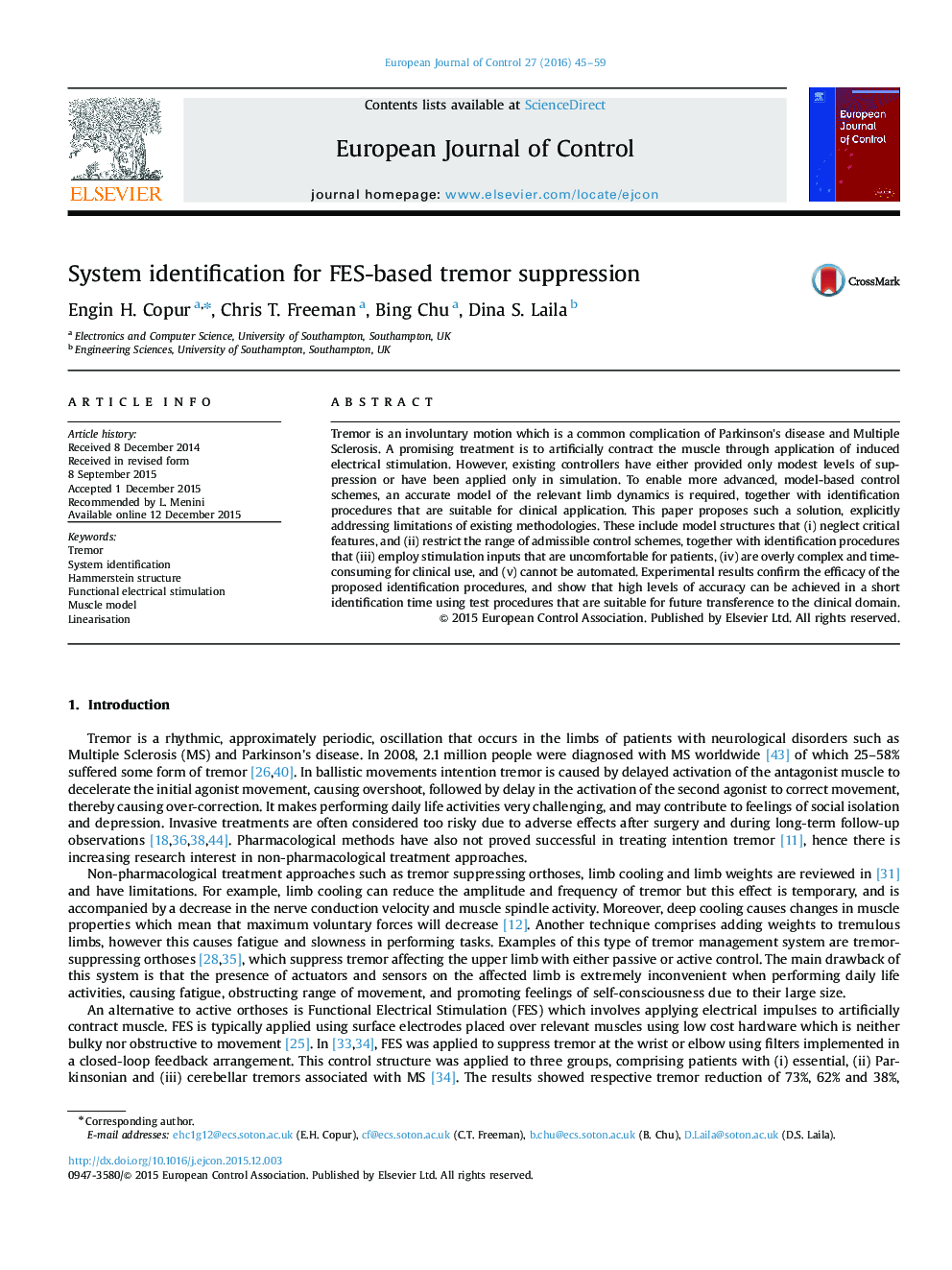| Article ID | Journal | Published Year | Pages | File Type |
|---|---|---|---|---|
| 707535 | European Journal of Control | 2016 | 15 Pages |
Tremor is an involuntary motion which is a common complication of Parkinson׳s disease and Multiple Sclerosis. A promising treatment is to artificially contract the muscle through application of induced electrical stimulation. However, existing controllers have either provided only modest levels of suppression or have been applied only in simulation. To enable more advanced, model-based control schemes, an accurate model of the relevant limb dynamics is required, together with identification procedures that are suitable for clinical application. This paper proposes such a solution, explicitly addressing limitations of existing methodologies. These include model structures that (i) neglect critical features, and (ii) restrict the range of admissible control schemes, together with identification procedures that (iii) employ stimulation inputs that are uncomfortable for patients, (iv) are overly complex and time-consuming for clinical use, and (v) cannot be automated. Experimental results confirm the efficacy of the proposed identification procedures, and show that high levels of accuracy can be achieved in a short identification time using test procedures that are suitable for future transference to the clinical domain.
